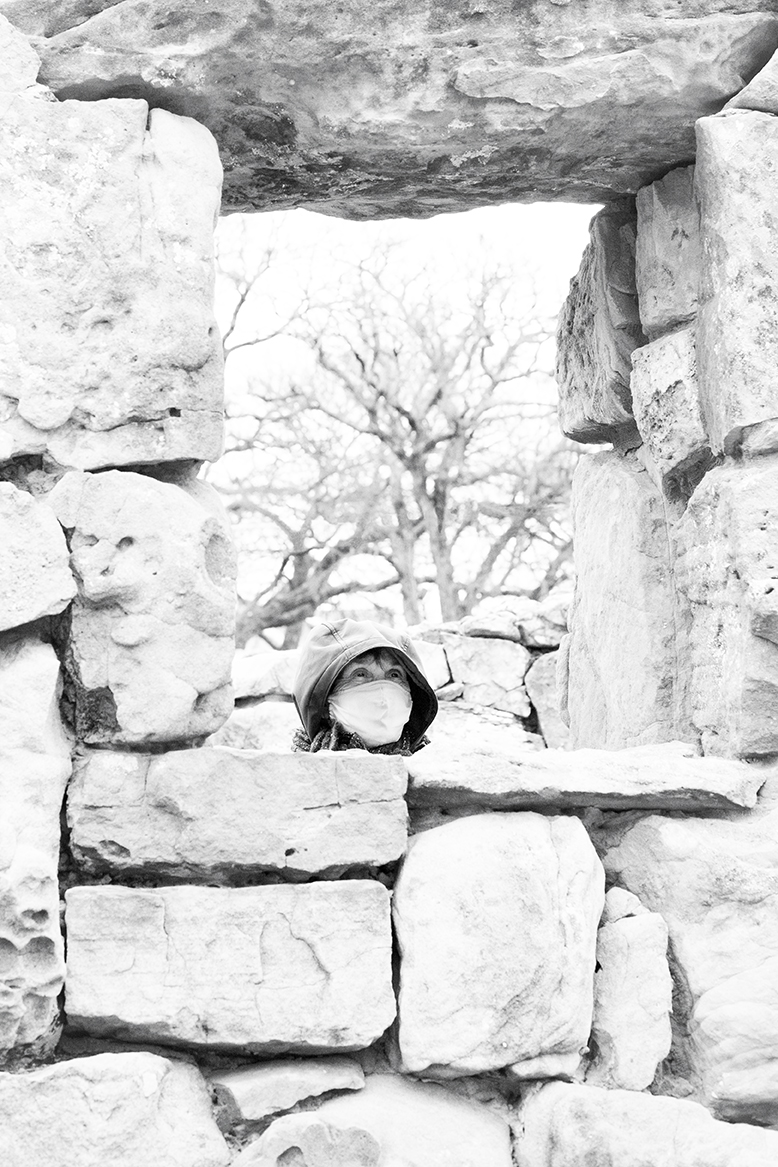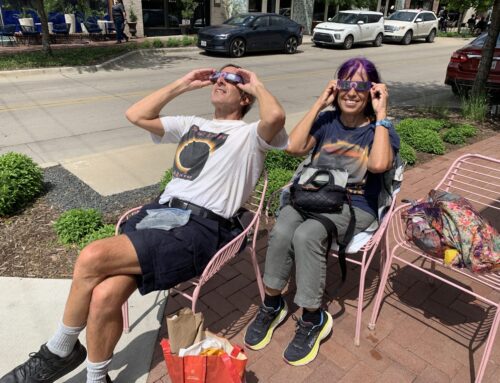
Photography by Owen Jones.
The snake was minding its business.
It struck Annemarie Bristow so hard in the thigh that she stumbled, and thought for a second that her friend had sneaked up on her while she was collecting Texas native plants on undeveloped land near Mountain Creek Lake, just west of Oak Cliff.
But it was a western diamond-back rattlesnake striking her from a pile of logs about 6 feet away, and she was alone.
“The snake was not at fault, and I was not at fault,” she says.
Bristow is a master naturalist who puts in hundreds of hours a year, along with eight or nine other dedicated volunteers, in an ongoing quest to turn Twelve Hills Nature Center into a native prairie habitat. That work brings them to undeveloped lots in Oak Cliff and all over the region scavenging for plants, especially native grasses that can be hard or impossible to find for sale in nurseries. With permission from the landowner, Bristow once worked with earth-movers directly behind her, saving as much liatris, a flower commonly known as “blazing star,” as possible.
“They were all making fun of me,” she says. “But I got all of the liatris.”
She’s attended City Council hearings just to meet developers and ask for permission to scavenge land where real-estate projects are planned.
“Once they know, then they will call you when they see plants,” she says.
Becoming a master naturalist requires 40 hours of combined classroom and field instruction, followed by 40 hours of volunteer service and eight hours of advanced training.
That’s how Bristow knew what to do for a snakebite. In master naturalist Roger Sanderson’s class, she’d learned that she had about “two-and-a-half, three hours” to get help, plus a few other tips: To not use a tourniquet. To squeeze the bitten area to remove as much venom as possible (a snakebite doesn’t bleed, and it doesn’t hurt, she says). And to keep it below your heart.
“I was not upset,” she says.
She walked down the hill back to her car and drove to Dallas Baptist University, where someone called an ambulance.
After two doses of antivenom at Methodist Dallas Medical Center, “I died,” she says.
In the moment, she thought being bitten by a snake was not the worst way to go.
“I love snakes,” she says. “I handle them. I just really like snakes. I think they’re maligned.”
But more antivenom was flown to Parkland Hospital, and Bristow was taken there and given a total of 28 vials, which saved her life.
Each vial costs about $3,000, and it has terrible side effects.
“I figure the side effects are better than the alternative, death,” she says.
Fellow volunteer Don Pearson says Bristow was back at “work,” at Twelve Hills, a couple of weeks later.
Texas master naturalist rules prohibit them from organizing workdays during the pandemic, but the Twelve Hills crew typically winds up there together on Sunday mornings on their own.
They don’t talk about politics, and they don’t have to go to the gym because hard labor in the nature center is all the workout they need.
Here are a few of the projects that volunteers including Bristow, Pearson, John Wilt and Marcie Haley have established since 2015.
Removal of Johnson grass
Keeping this invasive grass is an ongoing struggle, “a full-time job,” Bristow says. But they pickaxed it in the front of the nature preserve and have managed to keep a handle on it.
Removal of King Ranch bluestem grass, known as “K.R.”
Pearson recently tilled up a few thou- sand square feet of this dominating grass. It’s pretty but lacks nutritional value for insects, which can mean a loss in diversity of the rodents and birds that eat them. Volunteers are planting side oats gramma and Texas bluegrass instead.
Chinese Pistache removal
These ornamental trees are still sold in nurseries, but don’t provide nutrition for birds. They drop thousands of seeds every year and reproduce prolifically.
Creating tree tunnels
John Wilt is the volunteer to thank for those enchanting tree tunnels at Twelve Hills. He cleared out all of the brush and poison ivy that was around the trees and placed benches and stumps beneath them. Each of the two took him an entire summer, and there are a few more to do. The group is working on another one this year.
Planting in the caliche area
The nature center’s hilltop presented an opportunity to showcase plants that thrive in rocky areas. Bristow was driving on Westmoreland Road one day when she noticed that the City of Dallas had piled up a bunch of rocks on undeveloped land. She stopped to take a look and found the roots of 32 western white honeysuckle plants, Texas natives that you can’t buy in a nursery. They’re now thriving at Twelve Hills.
Creating a bluebonnet area
“Photographers come here, and people come here to do their pictures,” Bristow says. “When you make a nature center for people, you have to make color for people.”








